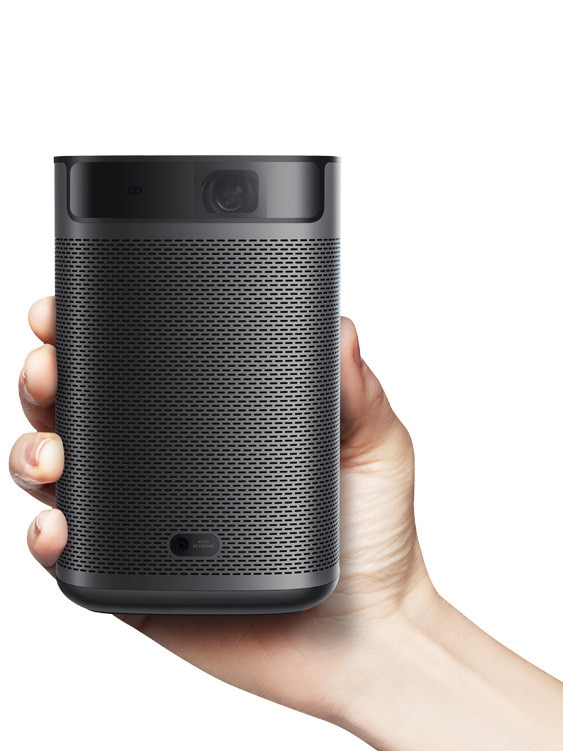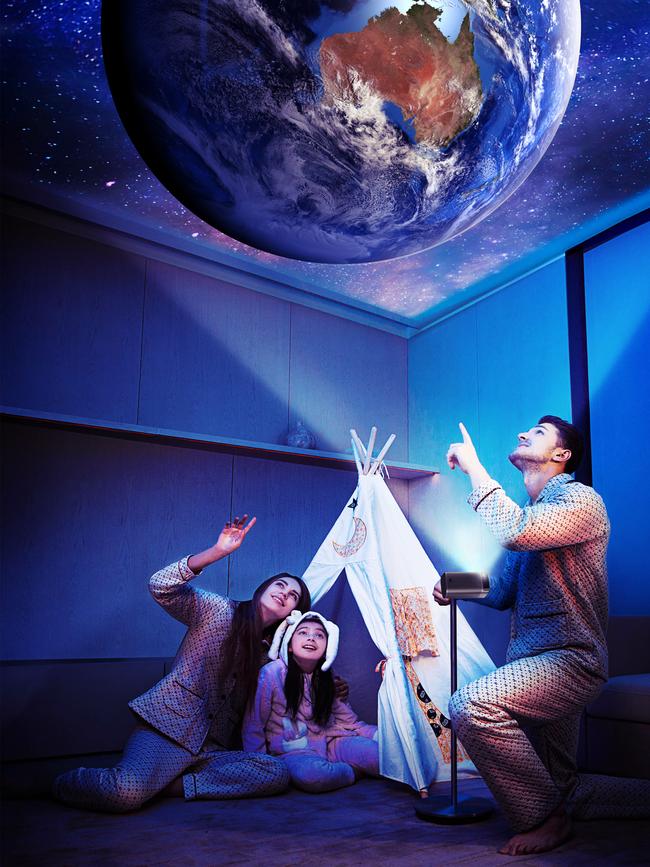Review: XGIMI MoGo Pro+ is like a smart speaker on steroids
Gone are the days when installing a projector meant holes in your ceiling and dealing with an irritatingly, noncooperative cloth screen.

Gone are the days when installing a projector meant holes in your ceiling and dealing with a cloth screen that would often get caught, stuck or blow over in the wind. Now all you need is a wall.
Smart projectors have changed significantly over the past few years. The devices once cost thousands but can now be bought for a little as $29. Of course any projector worth its weight in salt will costs you a little more than that.
The Australian recently got its hands on XGIMI’s MoGo Pro+, a device which the Chengdu-based company claims offers a “cinematic experience without the fuss”.

The latest of four designs, the MoGo Pro+ packs some pretty impressive features into a portable projector. While the company won’t get away with soda-can sized label some have been throwing around, the device could easily fit in your backpack and maybe even your purse.
As for the exact size, the MoGo Pro+ is more about the same height as an iPhone but with the circumference of a bottle of wine. But don’t let that size fool you.
Since entering the market in 2014, XGIMI has brought out four models, with the MoGo Pro+ the most impressive to date. It combines hundreds of apps, voice-activated technology and multiple source viewing, all in a bid to bridge the gap between what was once a conference aid and home theatre device.
Customers can choose from more than 700,000 movies to watch, all of which are blackout-proof thanks to an in-built 2400mAh battery. Adding to that are USB and HDMI ports with the ability to project from another device.
One gripe, however, was the in-built Netflix app. After several failed attempts, we discovered Netflix is not “optimised for this account” so we opted for a HDMI through the laptop. Good, but not ideal. Later we found the XTV Manager app, a tool which helps you manage other apps. Through that app we were able to access and watch Netflix. One ick for some could be the mouse-like function with Netflix rather than item selection navigation.

With 2GB RAM and a 16GB hard drive, the device can carry as many as 10 movies as well as music downloaded from one of the more than 5000 native apps.
For the outdoorsy types, that memory space combined the battery provides up to four hours’ playtime. The in-built memory is convenient function for internet shortages, as Netflix shows among others are available to be downloaded and saved to the projector.
A collaboration with Google gives customers access to Playstore, the ability to control the MoGo Pro+ with the Google Home app and a built in Chromecast. There’s also the Google Assistant feature available on the remote, for those who’d like to tell Google personally what they’d like to watch.
The output is 1080P with auto focus and auto keystone correction. While the texture of your wall could be an issue, the MoGo Pro+ held up pretty well without a screen, even on the pain-chipped walls of our inner west Sydney abode. In the office, that quality improved again.
As brands like Sony delve into the world of picture frame televisions, this projector could be a good alternative for those afraid to puncture their wall. However it’s clear a screen add-on would make for the best picture.
As for the sound, a partnership with Harman Kardon really does provide a surround sound experience. It’s loud enough to cover a small loungeroom or bedroom, but not optimal for a large event.

Some other pluses are the incorporation of Vimeo and VLC apps, which are great for watching documentaries and lesser known works and films.
Similarly to streaming devices, Google provides personalised content recommendations, some of which might come from your own search history. The live TV streaming option does at times make it feel close to a television.
At $999 RRP, it’s not for us to say whether you should you bin that new smart TV in lieu of a MoGo Pro+. But for Sydney’s growing number of micro apartments, XGIMI’s latest creation might just be worth a second look.








To join the conversation, please log in. Don't have an account? Register
Join the conversation, you are commenting as Logout